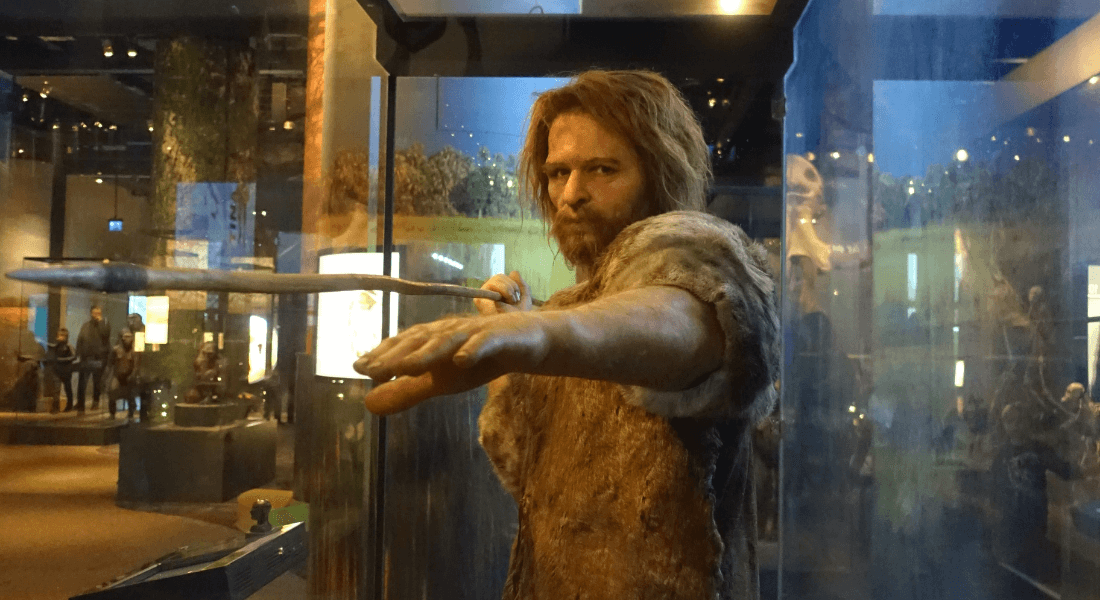The communication of evolution is riddled with cultural stereotypes
Communicating human evolution often has problems with both sexism and racism. And it's far from obvious to recipients, a study suggests.

If you open a textbook on evolution or visit an exhibition on the subject, you're likely to see the same visual representation of our distant ancestors: a man ready to hunt and a woman caring for a child.
But neither the idea of gender roles nor the nuclear family structure is based on our scientific understanding of how early human species lived. Instead, they reflect how cultural stereotypes have been fused into the mediation of the past.
"The communication of human evolution, like everything else, is shaped by ideology," says Marianne Achiam, associate professor at the Department of Science Education, University of Copenhagen.

Together with Jesús Piqueras, associate professor at Stockholm University, and educators from the Swedish Museum of Natural History, Marianne Achiam has been investigating how cultural stereotypes creep into the reconstruction of our evolutionary ancestry.
In an analysis of the permanent exhibition The Human Journey at the Swedish Museum of Natural History, the researchers found, among other things, that our female ancestors were portrayed as passive and submissive, while males were shown in more active and dominant roles.
At the same time, the exhibition presented the story of human evolution as a linear progression, moving from dark-skinned and primitive African species to advanced, light-skinned Europeans.
"That presentation simply does not square with the scientific evidence that exists for human evolution. Rather, it is based on a Western-oriented ideology," Marianne Achiam stresses.
The findings have been published in the scientific journal Science & Education.
From ape to white man
These cultural stereotypes imbedded in representations of Evolution are far from unique for the Swedish exhibition.
"Much of the research we've read indicates that human evolution research in particular tends to have ideas about gender and ethnicity that are based on ideology. And this is reflected both in textbooks and in museums," says Marianne Achiam.
The problem is perhaps best illustrated by the iconic visualization of human evolution, which shows the development from a chimpanzee-like ape to a white man, thus presenting the latter as the pinnacle of evolution.
"Right now we see museums being challenged in terms of inclusion and decolonization. So making exhibitions that propagate ethnic stereotypes is fraught with problems - even if it's not intentional," says Marianne Achiam.
Taken at face value
The problem is compounded by the fact that museum visitors may be inclined to accept the narrative, says Jesús Piqueras, who is a visiting researcher at the Department of Science Education this semester.

As part of the new study, the researchers looked specifically at how a group of young students understood the exhibition's content in terms of ethnicity and gender.
"We found that young people notice a lot of things about ethnicity. For example, the skin colour of the reconstructed people," Jesús Piqueras says.
"But they don't actually question it. They buy the stereotypical message that the exhibition is giving."
The perception of gender among these young students was a rather different. Here, several of them expressed skepticism about the version of the past they were presented with.
"It was interesting to see, and it may be an expression of the fact that gender is an aspect that young people are very sensitive to," Jesús Piqueras says.
Knowledge evolves
During the last few years, some of the problems pointed out by the researchers in the exhibition The Human Journey have been even brought to attention by visitors in the public debate.
Moreover, in 2018, new DNA research showed that early Western Europeans were probably dark-skinned.
In 2020 some parts of the exhibition in 2020 were revisited and today, visitors can for instance simulate in a touch screen how the skin colour in early humans probably looked like, and how that differs from the reconstructions. It's an exemplary way of dealing with it, says Marianne Achiam.
"It's no use pretending the problems aren't there. In this way, the museum shows that the best knowledge evolves over time," she says.
"It helps the museum visitor understand that science and its communication are not a source of objective truth. It's subject to cultural, political and ideological discussions, just like all other human behaviour."
Contact
Marianne Achiam
Associate Professor
Department of Science Education, University of Copenhagen
achiam@ind.ku.dk
+4535320357
